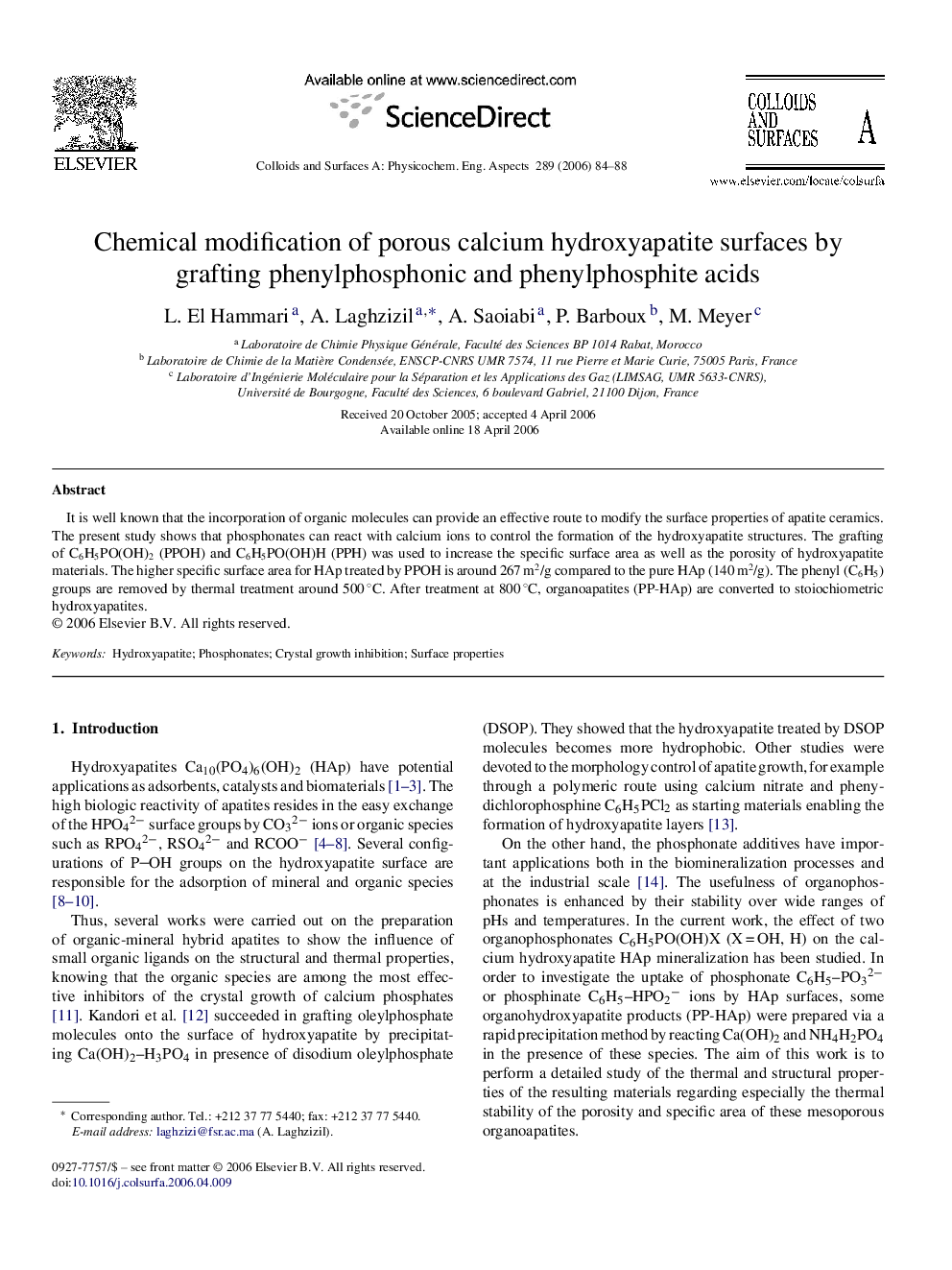| Article ID | Journal | Published Year | Pages | File Type |
|---|---|---|---|---|
| 598134 | Colloids and Surfaces A: Physicochemical and Engineering Aspects | 2006 | 5 Pages |
Abstract
It is well known that the incorporation of organic molecules can provide an effective route to modify the surface properties of apatite ceramics. The present study shows that phosphonates can react with calcium ions to control the formation of the hydroxyapatite structures. The grafting of C6H5PO(OH)2 (PPOH) and C6H5PO(OH)H (PPH) was used to increase the specific surface area as well as the porosity of hydroxyapatite materials. The higher specific surface area for HAp treated by PPOH is around 267 m2/g compared to the pure HAp (140 m2/g). The phenyl (C6H5) groups are removed by thermal treatment around 500 °C. After treatment at 800 °C, organoapatites (PP-HAp) are converted to stoiochiometric hydroxyapatites.
Related Topics
Physical Sciences and Engineering
Chemical Engineering
Colloid and Surface Chemistry
Authors
L. El Hammari, A. Laghzizil, A. Saoiabi, P. Barboux, M. Meyer,
